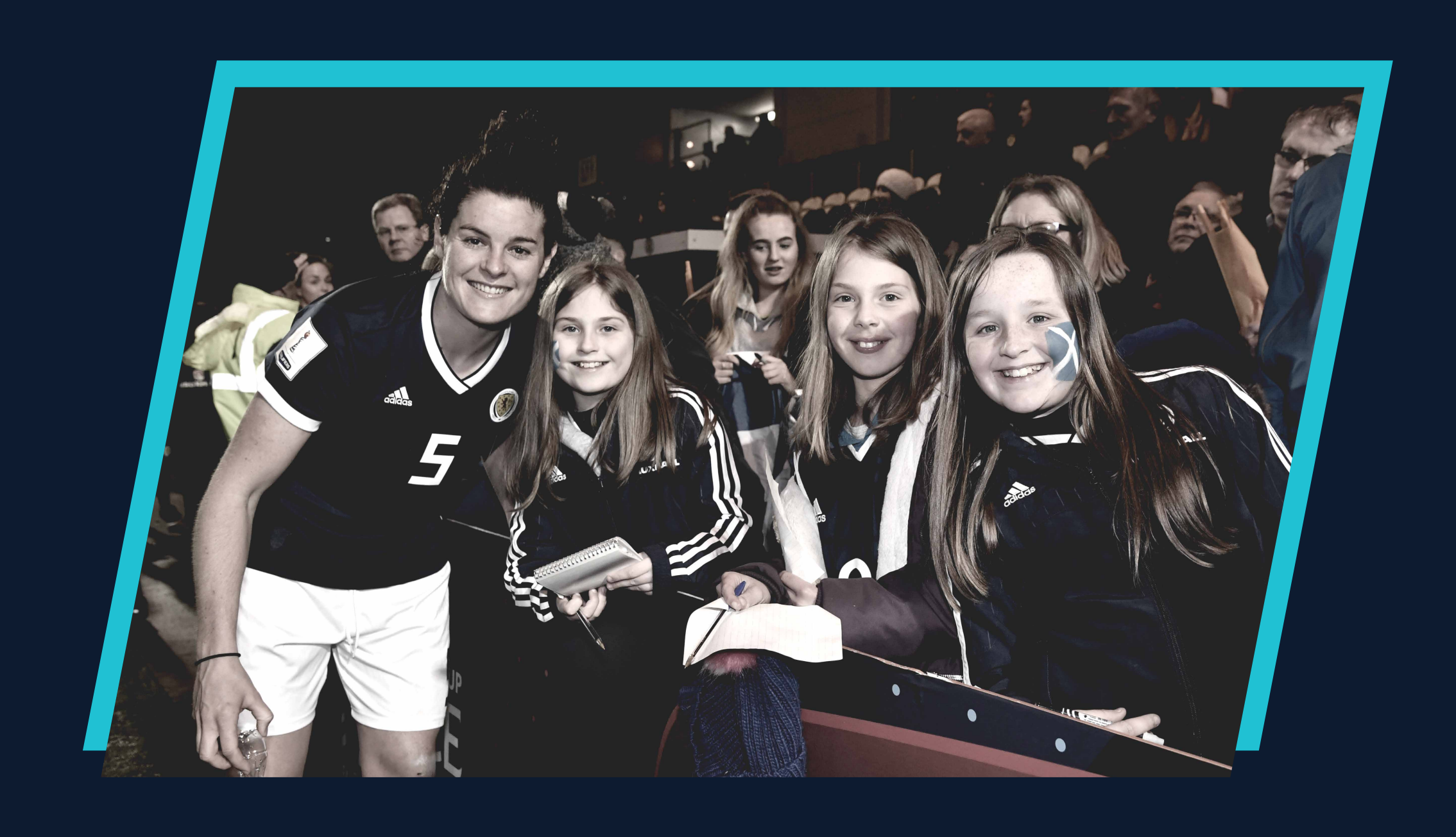The Scottish FA was very busy last week with a number of important announcements. On top of appointing a new manager for the Scottish women’s national team, they also released their new five-year strategy for Girl’s and Women’s football.
The last five years have seen massive change for Scottish women’s football. The national team qualified for its first UEFA Euro in 2017 followed by their first FIFA World Cup in 2019. The Scottish Women’s Premier League has started professionalizing. At the grassroots level there was a near 20% increase in female players, with 17,241 registered at present.
However, this is not the time for the Scottish FA to slow down. As the girl’s and women’s game develops rapidly around the world, a continued focus on developing the women’s game is essential for Scottish women’s football to keep being competitive.
To accomplish this the FA announced a new plan this past week. This plan, named Accelerate Our Game, was developed in conjunction with UEFA and aims to create Scottish specific strategies to keep the sport growing in the right direction.
It is a full game strategy that starts at the grassroots level, extends to the elite club level and hopes to keep the national team qualifying for major tournaments. It is a testament to the dramatic growth in the women’s Scottish game in recent years and the work that needs to keep happening for Scotland to stay in line with the world’s adoption of women’s football.
A significant area of interest is the domestic game, both the grassroots and the elite club level. The Scottish FA acknowledges the need for a greater number of players and the accessibility and medical needs of current players. They are aiming through the attraction of new girls and women, and the retention of those currently in the game, to have 25000 female registrations by 2025.
This grassroots domestic growth is to be done in conjunction with a professionalization of the elite club level. Now a winter league starting last season, the Scottish Women’s Premier League has 71 full-time professionals including 30 internationals from eight nations. The Scottish FA want that number to increase 10% per year.
They are also looking to implement a new governance model next year for all elite competitions. The FA want to expand the number of fixtures of the top flights of women’s football while increasing commercial revenues and attendance. This will be vital in keeping the SWPL attractive to players looking to compete at the top level club wise.
A further emphasis nationwide on increased scouting, increased competitive structures between young girls, enhancement of player development and the creation of a distinctive Scottish women’s national team identity are deemed essential for future success.
Finally, the Scottish Women’s national team will see several major changes. Unlike previous years where their home matches rotated around Scotland to “grow” the game, the FA has announced that from now on all home games will be held at Hampden Park. Through media targeting, they hope to increase the coverage of the women’s game and home attendance.
Alongside this new home game change, the Scottish FA announced the women’s national team’s new manager: Pedro Martínez Losa. Losa is no stranger to any fans of Kim Little, as he was her manager at Arsenal WFC where he won the WSL Cup and the English FA Cup.
A coach with nearly 20 years of experience, with both boys and women, Losa most recently managed Bordeaux in the French Division 1. He helped them to their first ever UEFA Women’s Champions League qualification. This will be the first national team that Losa has led.
These are all important announcements. Following through on them will be essential for Scottish women’s football and its competitiveness as the rest of Europe and the world accelerates their development of the women’s game.
The first indication of this increased need for investment occurred last year when Scotland failed to qualify for the upcoming Euro. They finished third in their qualifying group behind Finland and Portugal. This is a massive blow for the Scottish national team as the UEFA Euro 2022 will be taking place in England. It arguably would have been another great opportunity to showcase the game, but also for fans to attend a major international tournament next door.
Not all is lost though, qualification for the 2023 Women’s World Cup starts this fall. Scotland have been drawn in group B with Spain, Ukraine, Hungary and the Faroe Islands. With the increase in number of teams participating in 2023 going from 24 to 36, qualification for this world cup will have more UEFA members.
However, as demonstrated by their lack of England 2022 qualification, the rest of Europe and the world is catching up. The Scotland’s FA really must live by the title of their plan and Accelerate Our Game.
Photo: @ScotlandNT









